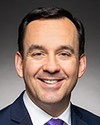I certainly see merit in what you're describing in respect to the fact that somehow there has to be a connection made. We can go into urban centres and we can educate and teach young people more about agriculture. But that's just one point. The next step is to make that connection between how they're going to get out of downtown Toronto, downtown Quebec City, downtown Calgary and actually make it into agricultural production. So we definitely see that there has to be that connection made somehow.
I'm not sure how you do it, quite frankly. Certainly Agriculture Canada has a database of farmers, and as they're getting older.... As one committee member mentioned, if he has three or four kids who aren't going into agriculture, where's the farm going to go? So perhaps a database could be developed to make that connection. As Ashley mentioned, there was the young fellow in her area who actually partnered with a family that was going to pass on their farm to that individual.
In terms of the U.S., I think some of the stuff they are doing really relates to partnering with different organizations in creating that education. When they did the science initiative, they partnered with a lot of companies, so there was money in the system to actually educate young people about agriculture and science. I think that's something we have to do.
One of the things about the program in the U.S., though, is that they really are, to a great extent, losing their rural roots, but right now the U.S. 4-H program is the largest youth-serving organization in the United States of America. It's hard to believe that the Scouts and Guides aren't bigger than 4-H. But 4-H is bigger.
Interestingly enough, when you were a 4-H member you probably did your club work...and I don't know whether it took place over the full course of a year, but in the U.S., the way they're counting their numbers is that it's almost anecdotal, where you're going to have a 4-H club that is going to be in a very specific timeframe, and it's a very short timeframe.
One of the problems that we and other youth organizations in Canada are experiencing is the shortage of 4-H leaders. I'll give you an example. When we realized that our numbers were going down by about 2% a year, we introduced a program called “Make your Escape!” to encourage young people to get into 4-H. This was all done through print, and a little bit of radio, advertising. In the space of less than a month, we had 5,000 hits on our website for kids in the greater Toronto area to go into 4-H. There were 5,000 hits, but guess how many youth we put into 4-H? Zero. There weren't any leaders for them in--




